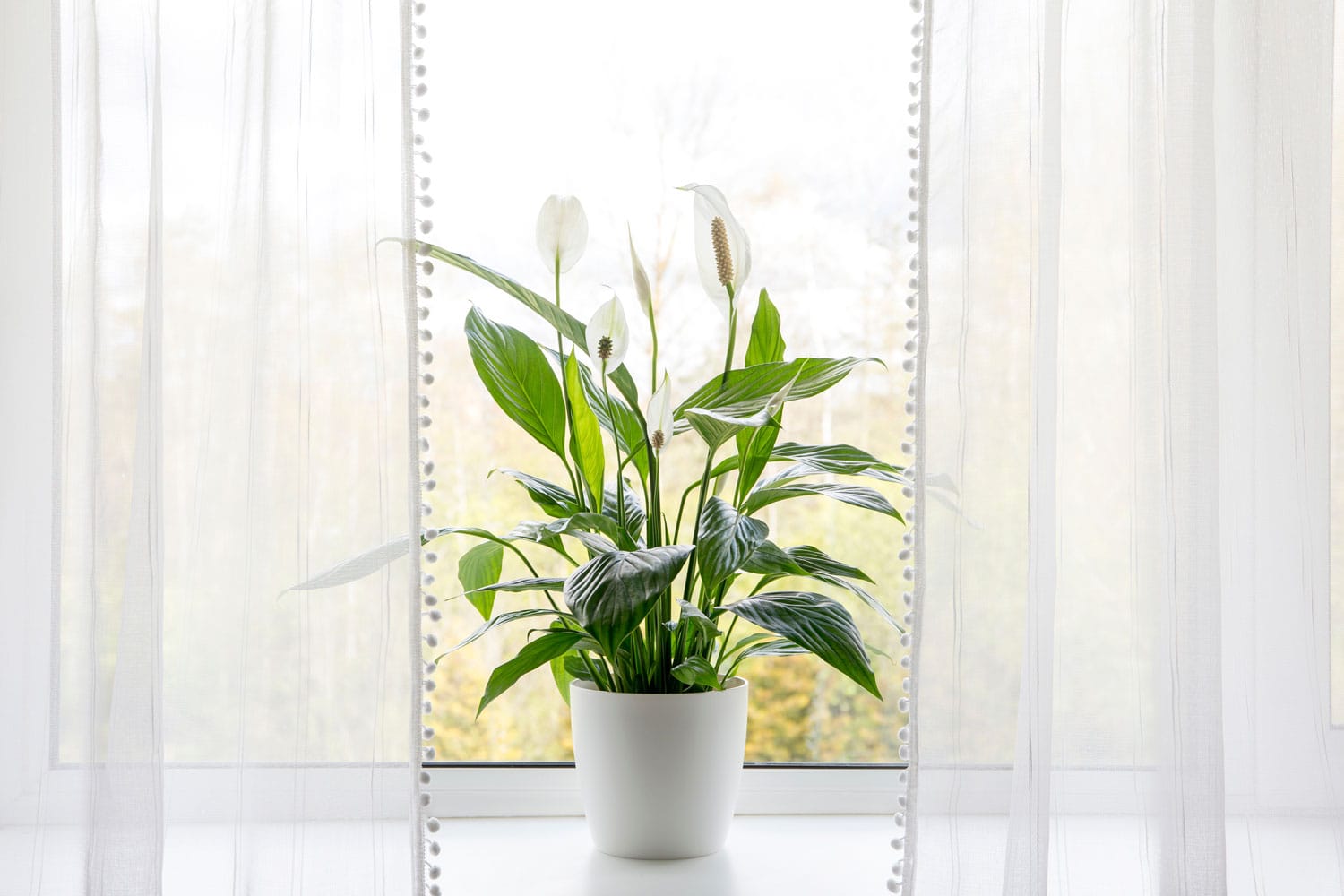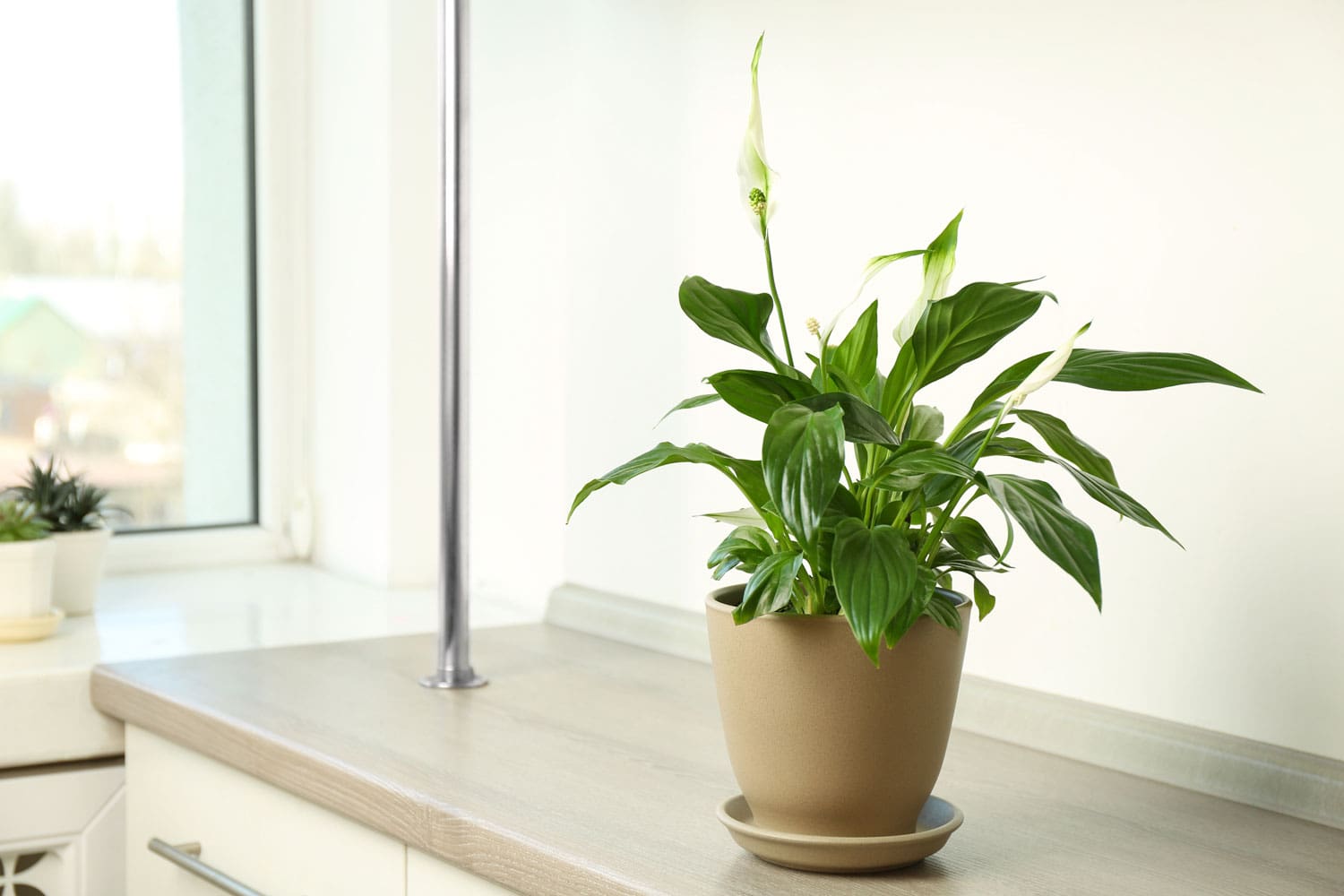Peace lilies are a popular and attractive addition to any indoor space, thanks to their easy maintenance and elegant appearance.
One of the factors that make peace lilies such appealing houseplants is their ability to tolerate lower light levels.

But despite this tolerance, to keep your peace lily thriving and producing those lovely blooms, it's essential to provide it with the right lighting conditions.
In this article, we'll tackle where best to place your peace lily and what type of light it needs to keep it happy.
Knowing Your Peace Lily's Growing Characteristics
Peace lilies are beautiful indoor plants known for their glossy, dark green leaves and showy, spoon-shaped white flowers.
They can grow from 1 to 6 feet tall and are relatively easy to maintain.
Light Conditions in Natural Environment
These plants are native to tropical regions and thrive in environments with dappled sunlight.
In your home, it's important to provide similar conditions. A well-lit area with indirect sunlight is ideal for peace lilies.
Avoid placing them in direct sunlight, as this can cause the leaves to yellow and develop brown tips.
Watering and Soil Preference
Another essential feature of peace lilies is their preference for damp soil.
While they enjoy moist conditions, it's crucial to not over-water them. Over-watering can lead to root rot and other issues.
To find the perfect balance, it's recommended to water your peace lily only when the soil starts to feel dry to the touch.
Leaf Maintenance
It's also a good idea to clean the leaves periodically, as they can accumulate dust. To do this, simply wipe them gently with a soft, damp cloth.
This not only keeps the plant looking fresh and attractive but also allows for better photosynthesis, as the clean leaves can better absorb sunlight.
Fertilizer Needs
Lastly, don't forget about feeding your peace lily. The use of fertilizer is beneficial, but the amount and frequency will depend on the light conditions in your home.
Try this peace lily 3-1-2 premium liquid fertilizer on Amazon.
If your peace lily is situated in a low light area, use half the recommended fertilizer rate.
For plants in higher light conditions or near a sunny window, you can apply the fertilizer at full strength or more frequently.
Here's a video on how to care for your peace lily:
Ideal Lighting Conditions for Peace Lily
As a peace lily owner, you'll want to understand the best conditions for your plant to grow healthy and happy.
Natural Light
Your peace lily prefers medium light conditions. Ideally, you should place your plant near an east-facing window or somewhere close to a west-facing window, but not in direct sunlight.
Direct sunlight can cause the leaves to burn or turn yellow. Instead, filtered or indirect sunlight will make your peace lily thrive.
Using Artificial Lights
If your space lacks sufficient natural light, you can consider using artificial lighting to complement your peace lily's growth.
Look for lamps that produce a spectrum of colors (red, far-red, and blue wavelengths) essential for plant development.
Be mindful of maintaining the right distance between the lighting source and your peace lily to avoid any adverse effects.
For medium-light conditions such as those recommended for peace lilies, consider lights with a photosynthetic photon flux (PPF) of 150-250 umol m-2s-1.
This measure indicates the level of usable light emitted for your peace lily's growth.
It's essential to remember that artificial lights are meant to supplement natural light and should not replace it completely.
Choosing the Right Location
One of the best reasons why peace lilies are a great indoor plant is that it will thrive in a well-lit area without direct sunlight exposure.

As mentioned earlier, the ideal locations include east-facing windows or spots near west-facing windows but out of direct light.
Keep in mind that if your peace lily is placed in a darker corner, its growth might slow down and the flowering might decrease. They will then need some level of indirect sunlight.
Ensure the area has a consistent temperature, as peace lilies do best in environments with steady warmth and humidity.
Signs Your Peace Lily Isn't Getting the Right Light
Here are the most common symptoms that your plant is not getting the right light and what you can do to address them.
Brown Spots on Leaves
If you notice brown spots on your peace lily's leaves, it may be an indication of too much direct sunlight. Peace lilies prefer to be in well-lit areas but out of direct sunlight.
To prevent brown spots, move your plant to a different location with indirect light, like an east-facing window or near a west-facing window without direct sun exposure.
So what do you do with the brown and dead leaves? Read here: Should I Cut The Dead Leaves Off My Peace Lily? [Inc. When And How To]
Droopy Leaves
Droopy leaves can also be a sign that your peace lily is suffering from improper lighting conditions.
They may need more light than they're currently getting, especially if the plant is stretching towards the sun and experiencing spindly, lanky growth.
To fix droopy leaves, it might be necessary to supplement the natural light with artificial lighting.
For other concerns, you can read more here: My Peace Lily Is Dying – What To Do?
Ideal Conditions: Bright, Filtered Light
To wrap up, remember that peace lilies thrive in bright, indirect light, so find a location near a window with filtered light.
When positioning your peace lily, avoid direct sunlight, as this can scorch its beautiful dark green leaves.
A sheer curtain or a location with dappled sunlight will do wonders for your plant's health.
Pay attention to your peace lily's leaves; if they become pale or lose their shine, it might need more light. If leaves turn brown, it might be getting too much.
It's important to ensure your peace lily gets consistent exposure to light, so consider rotating the plant every few weeks.
This will help maintain even growth and prevent your Peace Lily from becoming lopsided.
If you find it challenging to provide natural light consistently, you can also use an artificial light source to supplement its needs.
Providing the right light conditions for your peace lily will greatly impact its overall health and growth.

